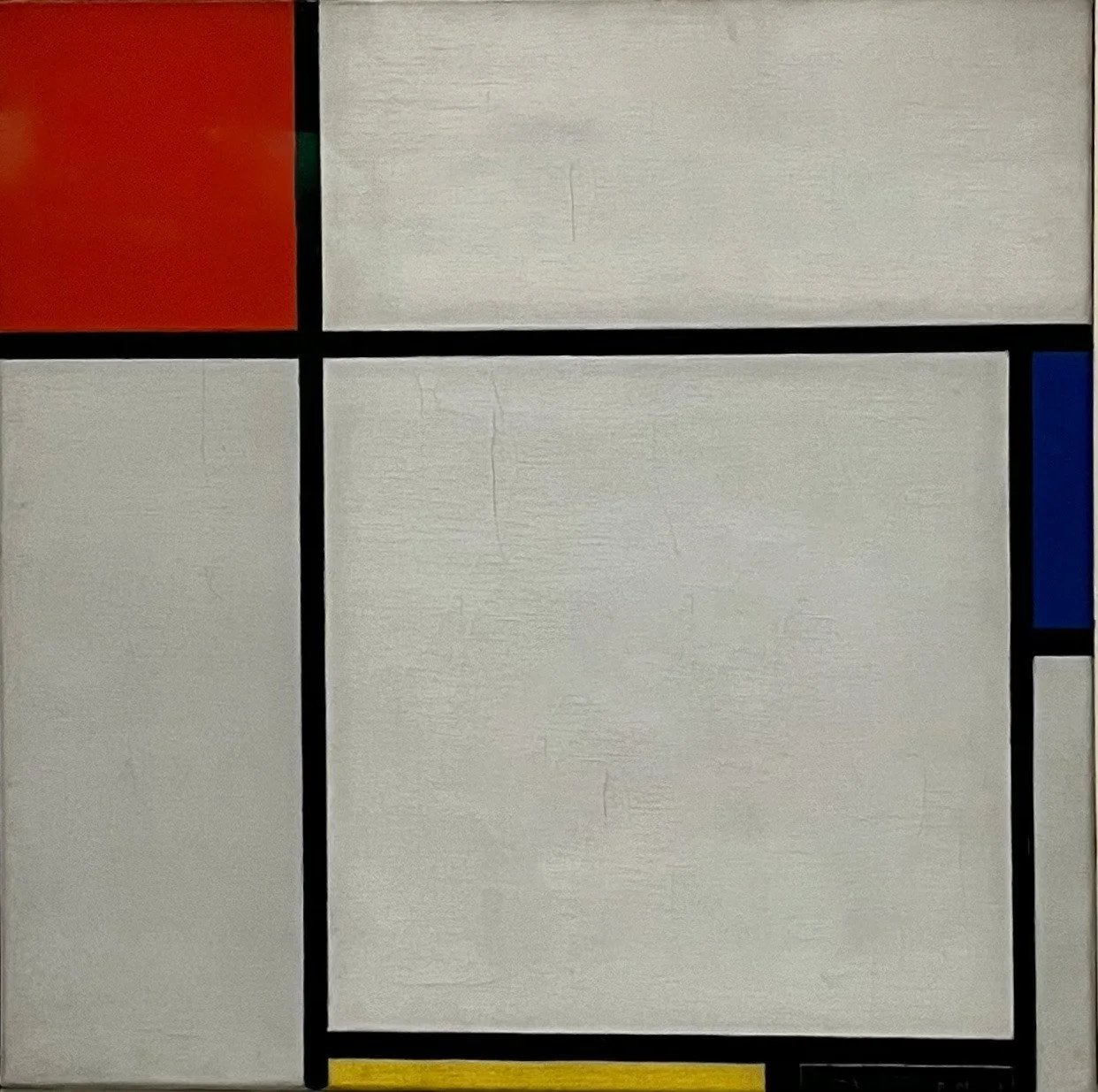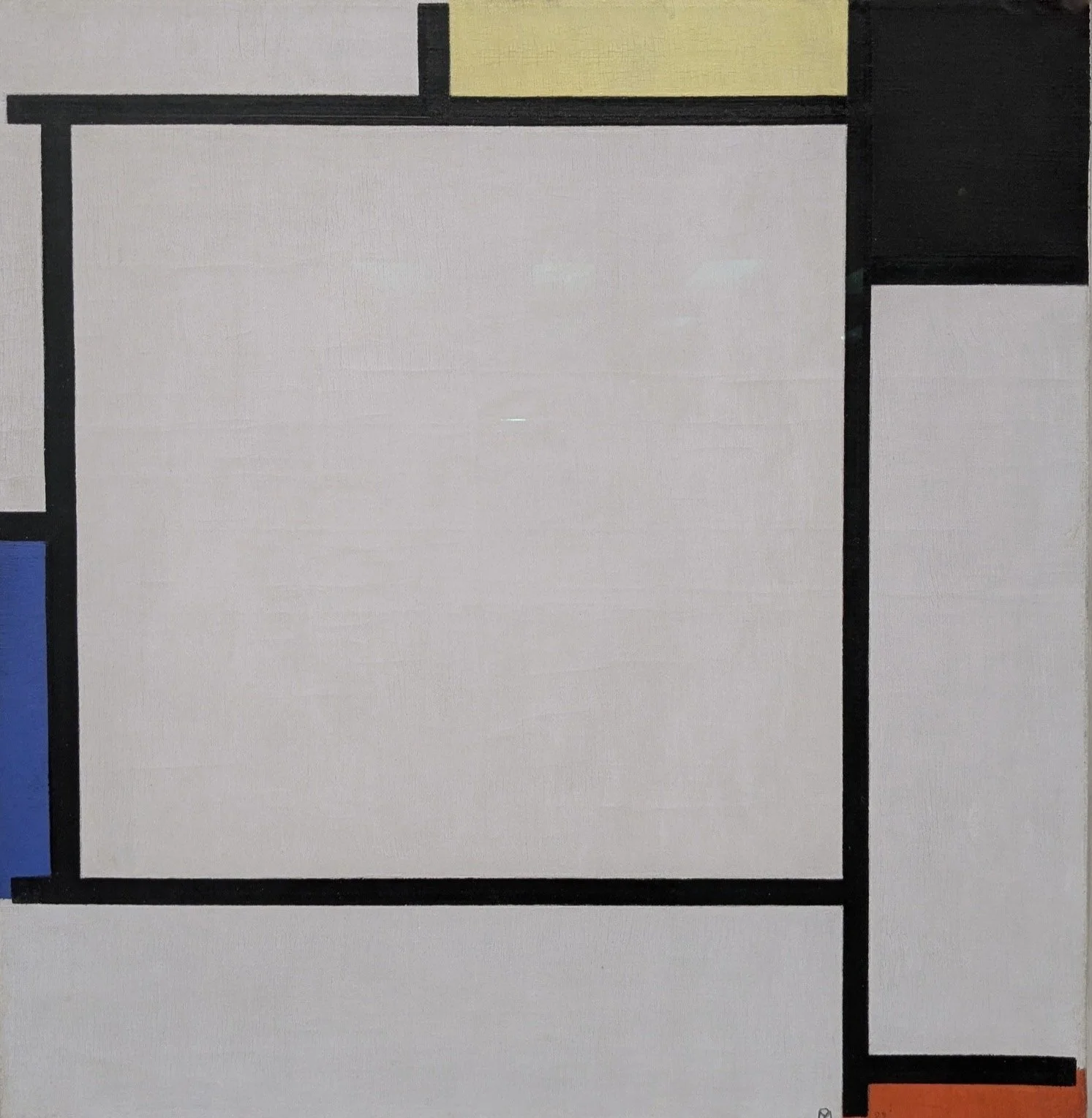A Mondrian Moment: at Christie's and the Guggenheim
Piet Mondrian (1872-1944), Composition with Large Red Plane, Bluish Gray, Yellow, Black and Blue, 1922. Oil on canvas. Photo via Christie’s
In a perfect storm of neo-plastic synchronicity, New York's art world finds itself caught in a Mondrian moment this spring. As the Guggenheim's illuminating exhibition "Piet Mondrian: Ever further" enters its final weeks, Christie's has announced the upcoming auction of a quintessential Mondrian masterpiece that exemplifies the Dutch pioneer's revolutionary visual language.
"Composition with Large Red Plane, Bluish Grey, Yellow, Black and Blue" (1922) will headline the May sale of "Leonard & Louise Riggio: Collected Works." Highlights of the collection, which also includes works by René Magritte, Andy Warhol, Pablo Picasso and Mark Rothko, are making stops in Paris and Dubai before returning to New York ahead of the auction May 20-21.
The Mondrian represents the artist at the height of his powers, when the strictures of his self-imposed Neo-Plasticism had crystallized into a universal language of pure abstraction. His iconic visual vocabulary – a meticulously calculated interplay of straight lines, primary colors, and neutral black, white and grey – didn't emerge fully formed. The artist developed his radical approach to abstraction over years of experimentation, first influenced by Cubism after his move to Paris, then through his founding of De Stijl in 1917 with Theo van Doesburg.
"This painting demonstrates the extreme rigour of Mondrian's process," notes Vanessa Fusco, International Director and Head of Impressionist and Modern Art at Christie's. "It's a painting that transports you, that rewards prolonged and careful looking, as you appreciate the fastidious study and contemplation that went into creating the perfect harmony of the composition."
Piet Mondrian (1872-1944), Composition, 1929, oil on canvas. Photo by Lisa Freeman
The upcoming sale coincides fortuitously with the Guggenheim's "Piet Mondrian: Ever further," a comprehensive exhibition drawing from the museum's collection of Mondrian works. Tracing the evolution of his style from early naturalistic drawings through his radical turn to abstraction, the show presents 18 works that chart his lifelong pursuit to move "ever further" from representation toward a universal visual language.
Piet Mondrian (1872-1944), Tableau 2, 1922, oil on canvas. Photo by Lisa Freeman
"It is a joy to start with Mondrian," says Mariët Westermann, Director and CEO of the Solomon R. Guggenheim Museum and Foundation, who curated the exhibition. "His pictures in the Guggenheim allow us to reconstruct his creative journey step by step, and they help us see him as the experimental painter he was—not just the geometric designer he is often thought to be."
Mondrian's influence extended well beyond the canvas. His iconic aesthetic has inspired countless artists and designers, with fashion houses from Yves Saint Laurent to Hermès and Prada releasing designs that channel his distinctive style. Yet the purity of his artistic vision remains undiminished, each painting representing years of meticulous calibration.
As art historian Nicholas Fox Weber, author of the 2024 biography "Mondrian: His Life, His Art, His Quest for the Absolute," observed during a recent Guggenheim talk: "His quest was to know what it was that lasts forever. He was looking for the things that pertain to everyone."
The Guggenheim exhibition "Piet Mondrian: Ever further" runs through April 20, 2025 and the Christie’s auction is in late May. For those seeking to comprehend the relentless, spiritual pursuit of universality that defined Mondrian's career, these twin opportunities present a moment to engage with the revolutionary spirit of an artist who refused to settle for mere representation, pushing ever further toward a transcendent visual language that continues to resonate a century later.



